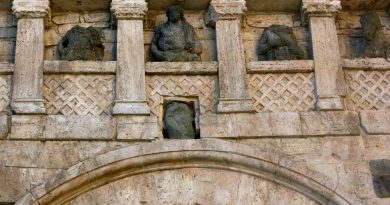The Sacred Spring on the Etruscan Sarcophagus
In the Archaeological Museum of Perugia we can admire one of the most fascinating pieces in Perugia’s Etruscan collection: the so-called “Sarcophagus dello Sperandio”, done in pietra fetida (limestone typical of Chiusi), which dates back to the Etruscan archaic age and which takes its name from the place where it was found in 1843.
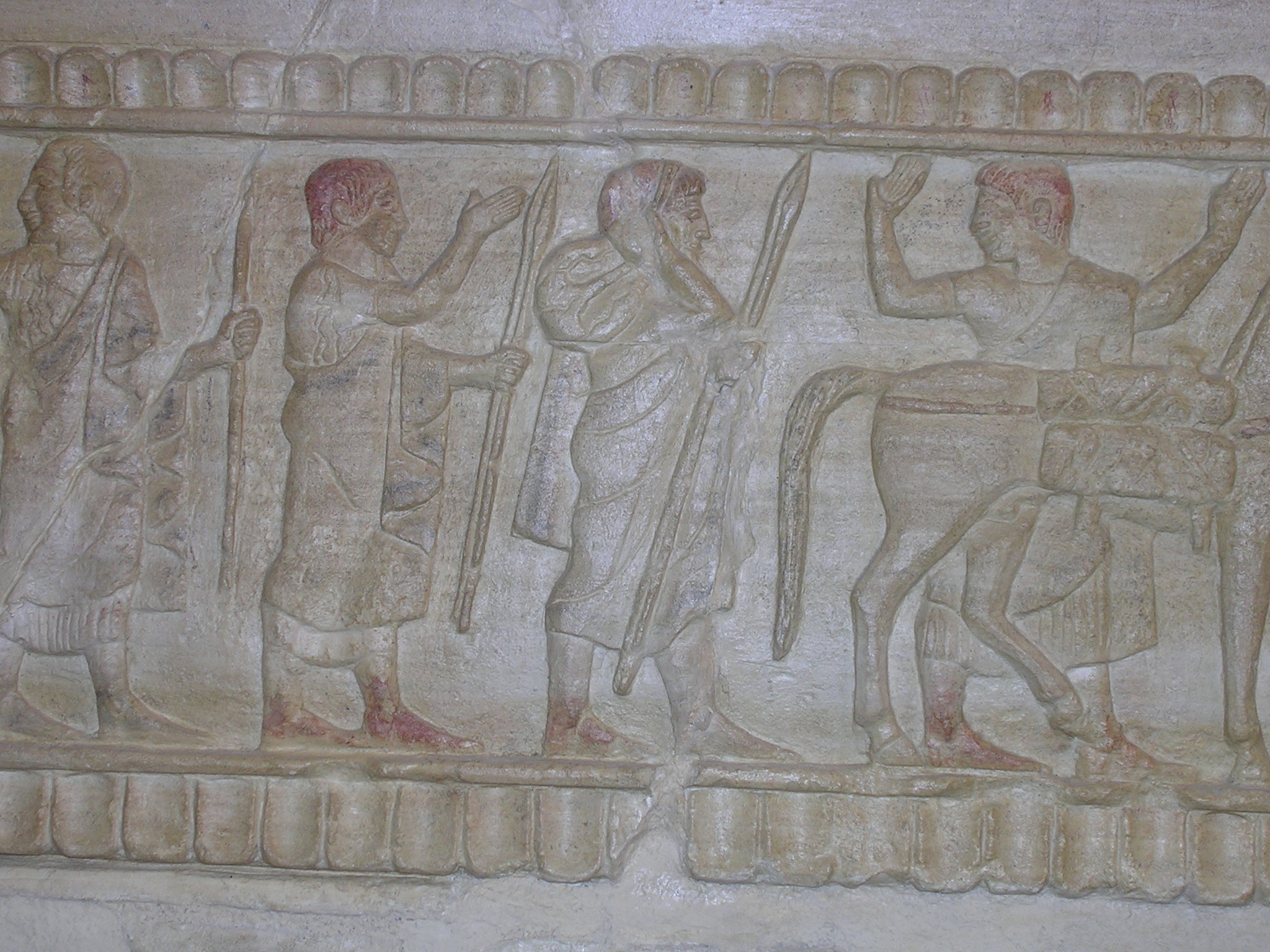
The funeral settings that were discovered near the remains of the deceased, included iron weapons which revealed that the Etruscan buried there, was a warrior of high rank. Between the sixth and fifth centuries BC, in fact, many cities including Etruscan Chiusi and Perugia were characterized economically and socially by war activity. And therefore it is likely that the Sperandio warrior would have belonged to that class of warriors, who had grown rich within the confines of Etruria as a result of the art of war.
Archaeologists believe that the sarcophagus was commissioned and built in a factory of Chiusi, to be transported subsequently to Perugia. This leads one to assume that the buyer, originally from Chiusi, must have gone later to Perugia, bringing with him what would become his coffin. Carrying an artifact so heavy, obviously not easily portable, must have been an enterprise that was anything but easy, especially because the old route that went from Chiusi to Perugia was crossed by rivers and streams, that a wagon was not able to overcome without the use of bridges or special ferries. This account indicates to us how the warrior must have lived at the time; travel between the two cities within Etruria would have been frequent and habitual.
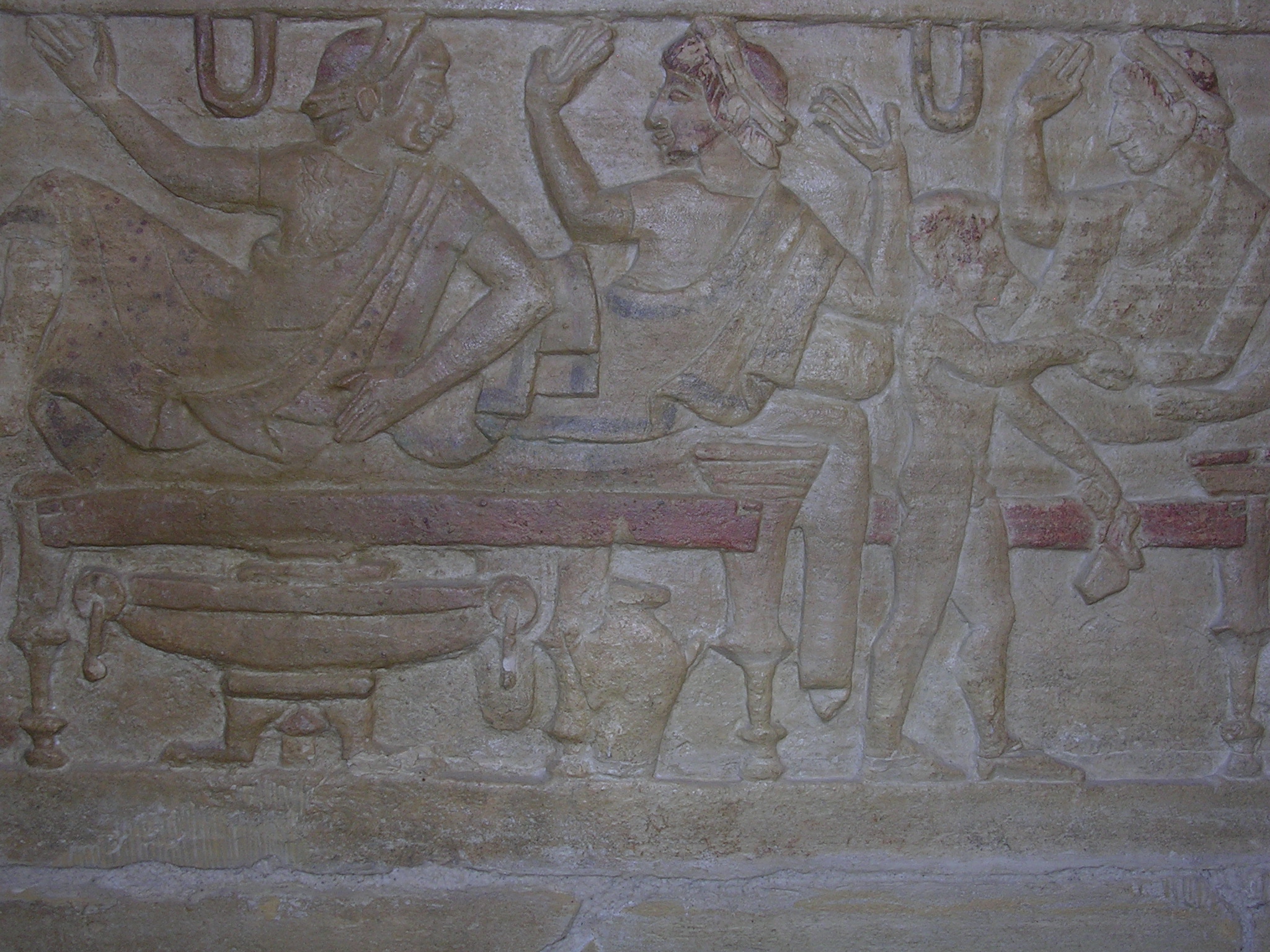
But let’s get back to observing the sarcophagus, which is supported by lion-shaped legs. The sculptural quality of the work shows that in 500 BC the craftsmen of Chiusi had reached a level of great artistic skill, as confirmed by the figures in relief, boldly superimposed on different levels to create a more realistic effect and give a hint of perspective. The specimen is well preserved and still retains traces of its original color, especially in the two side scenes in which a typical Etruscan banquet with its rituals are represented.
Looking closely at the sides of the sarcophagus, in fact, we note three male figures lying on a bed (kline), with their left elbow resting comfortably folded on a cushion between the body and the arm. With a friendly and intimate gesture, the man at the center of the scene rests his right hand on the shoulder of his companion, who is in front of him. The latter, however, with the right holds a kilix (ceramic wine cup), in the typical attitude of one who is involved in the Etruscan game kottabos. A third character plays a lyre, while at the foot of the bed he decants wine to a glass and a jug, and a very young nude slave serves the banquet. It seems a purely convivial scene, but in reality we know that the Etruscan banquet was also something very spiritual, connected to religion and the cult of the dead. It might also seem strange that symposium figures depicted on the sarcophagus are only men, yet it is only since 500 BC that the banquet scenes found in Etruscan tombs represent female figures among the participants in the symposium. One thing is certain: the banquet scene was meant to expose the high social status of the deceased.
Let us dwell now on the main stage that runs along the side of the sarcophagus, which is without doubt the most enigmatic and perhaps the most interesting of them. We see depicted a true and proper parade, animated by men, women and animals which proceed neatly from left to right.
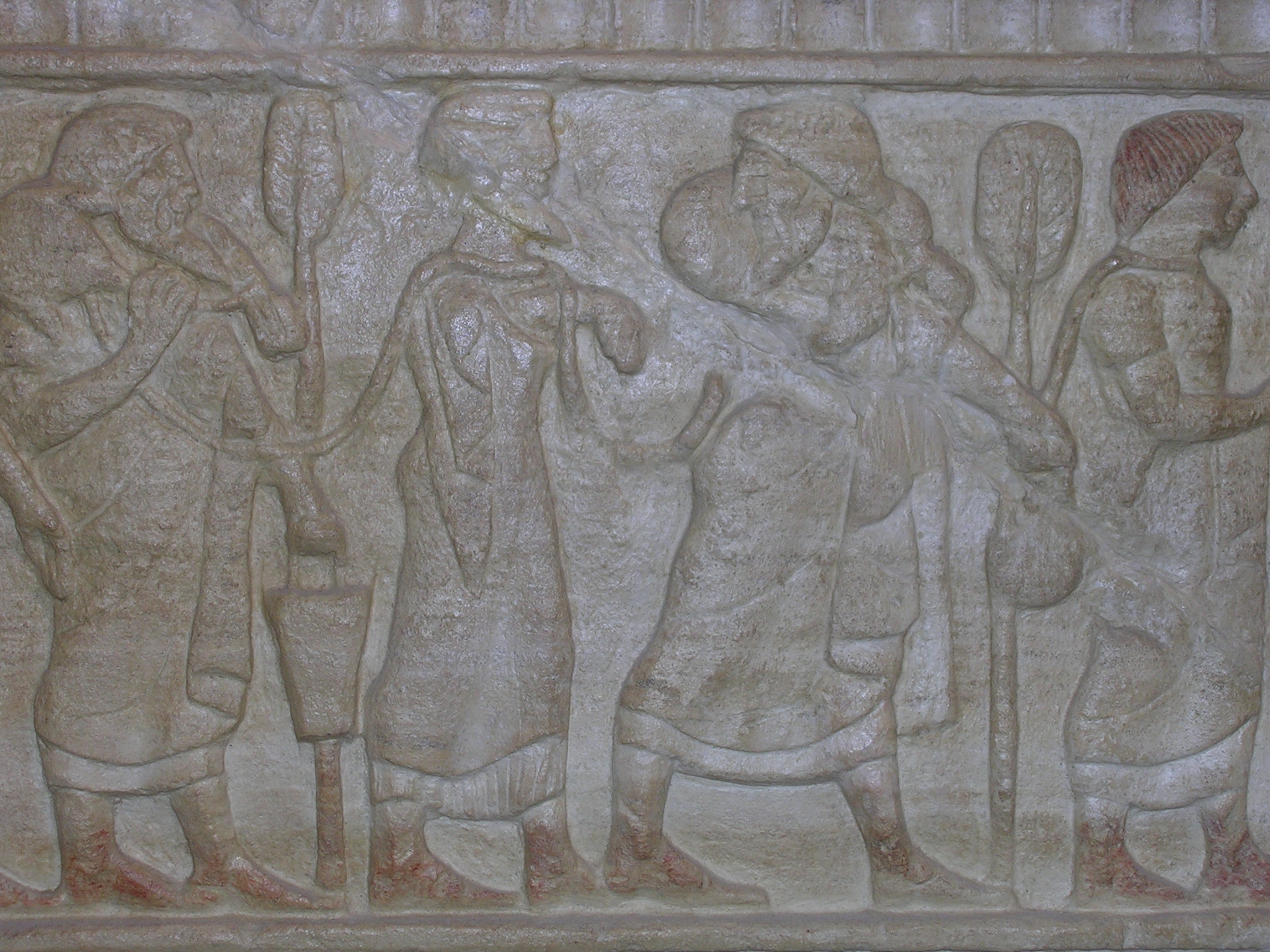
At the head of the group is a young man with a stick in his hand: he has a rope around his neck, the same one that binds the three bearded men who follow him: this is probably one of the slaves, prisoners, or hostages of rank, captured by the Etruscans for ransom. To help confirm their status as prisoners you can also observe that their hair is in a rough cut that hugs their faces like a shell. It represents a striking contrast to the more fashionable hairstyle that characterizes the other personages who throng the procession: they are young men, cleanly shaven and with a stylish Greek haircut that leaves the ears uncovered. Except for one woman, and a youth in the center that has his arms free, all the male characters are wielding weapons such as sharpened rods, sticks or spears. There is also a central figure which stands out from the others because in one hand he is holding a stick called lituo (typical liturgical instrument used by the Etruscan priests) and in the other a machaira (curved saber in use since the sixth century BC). The parade also includes many domesticated animals, including pack horses laden with baggage, a dog with a collar and finally oxen, goats and lambs.
The scene is not easy to interpret and there are different explanations from scholars. The only thing that is certain is that the reliefs carved on the sarcophagus were meant to represent very well the history and cultural identity of the Etruscan who purchased the coffin from the shop in Chiusi.
According to some, the parade could be the victory of the indigenous people of Italian origin from an Etruscan warrior and the group he belongs to. The women, animals, and especially the prisoners bound with rope and forced to carry the lambs on their shoulders, might represent the rich spoils of a battle. That would be something to flaunt, to demonstrate the power and social status attained by the deceased.

It should be noted, however, that the characters in the parade are wearing civilian clothes and are not seen with shields, helmets, or shin guards. The stick, machaira, rods, and spears while weapons that would normally be used in battle as shown here seem rather to be symbolic instruments, almost as if they were intended to represent the end of the war time and the reopening of the civil authority.
We do not seem to see a leader of the parade, unless it is the character at the center of the stage, holding the lituo and machaira. He seems to stand out from others in terms of hierarchy. It does not seem that the shirtless boy who heads the group with a stick and a rope around his neck seem to fits the image of a warrior prince. If there was to be a leader of the parade, we would expect it to be depicted in a chariot in triumph, just like it would have been done a half a century before when the princes flaunted parade floats at their funeral.
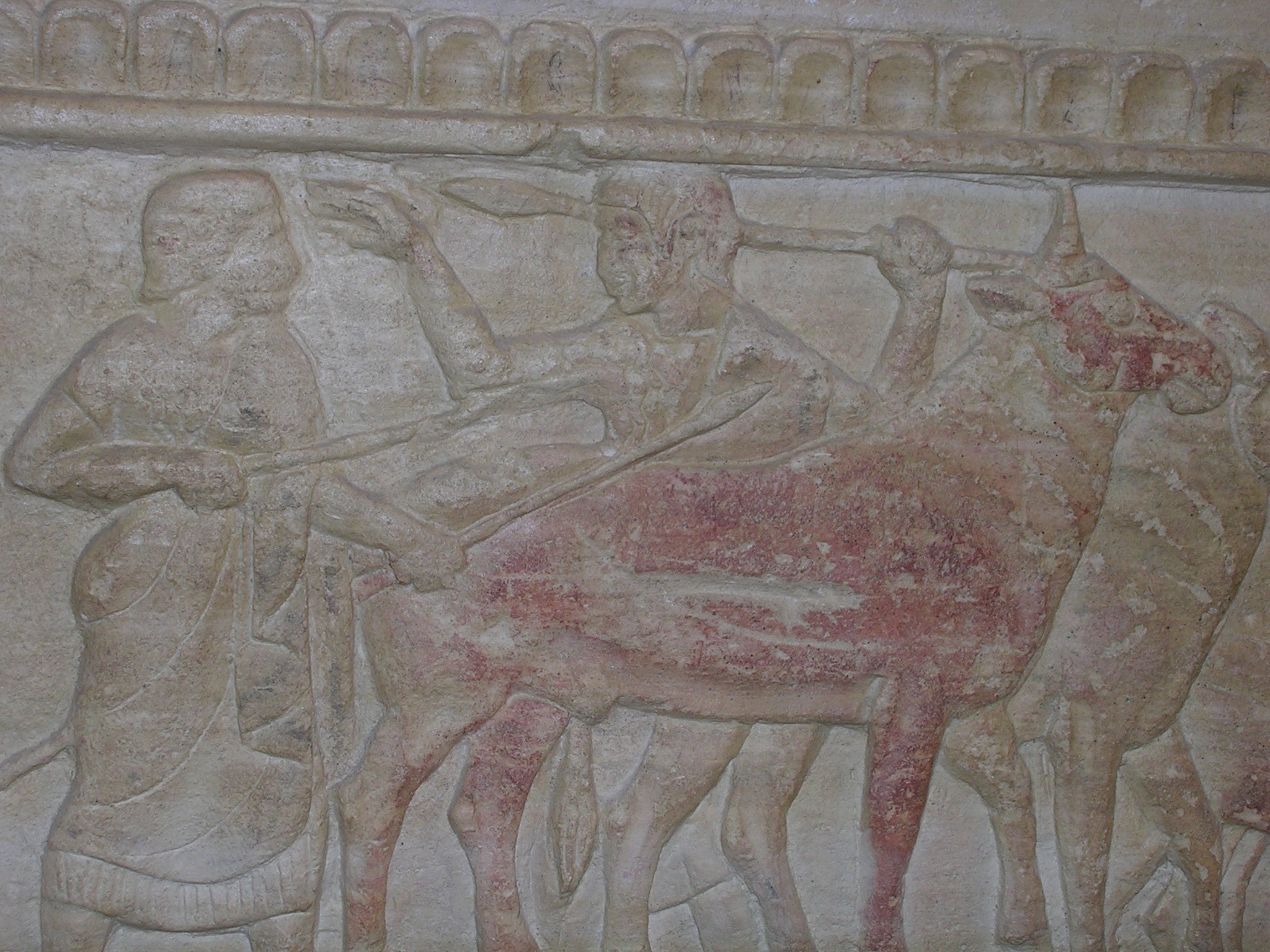
Among the various interpretations, the most fascinating in my opinion is one that envisions the procession representing a ver sacrum (sacred spring). It was a customary ritual, witnessed especially among the indigenous Italic people, which consisted of the migration of a social group in the case of overcrowding, or other natural events such as famine which would jeopardize the survival of that particular people. The ritual of the ver sacrum, so called because it took place in spring, involved a big sacrifice on the part of the youth who voluntarily left their people to migrate to new territories.
The scene of the procession might also represent the migration of a group of aristocrats from Chiusi to Perugia, referring to the age of the Etruscan king Porsenna. Or it could document the memory of the Etruscans who migrated to the territories of the Po Valley. In a similar regard, you might recall the legends of the founding of cities such as Perugia, Bologna and Mantova, which also mention Servio in reference to how Ocnus, to avoid quarreling with his brother Auleste (legendary founder of Perugia), decides to leave to found Felsina (Bologna) and Mantua (Mantova).
Written by Antonella Bazzoli (marzo 2011)
Translated by Lynn de la Torre (maggio 2012)




